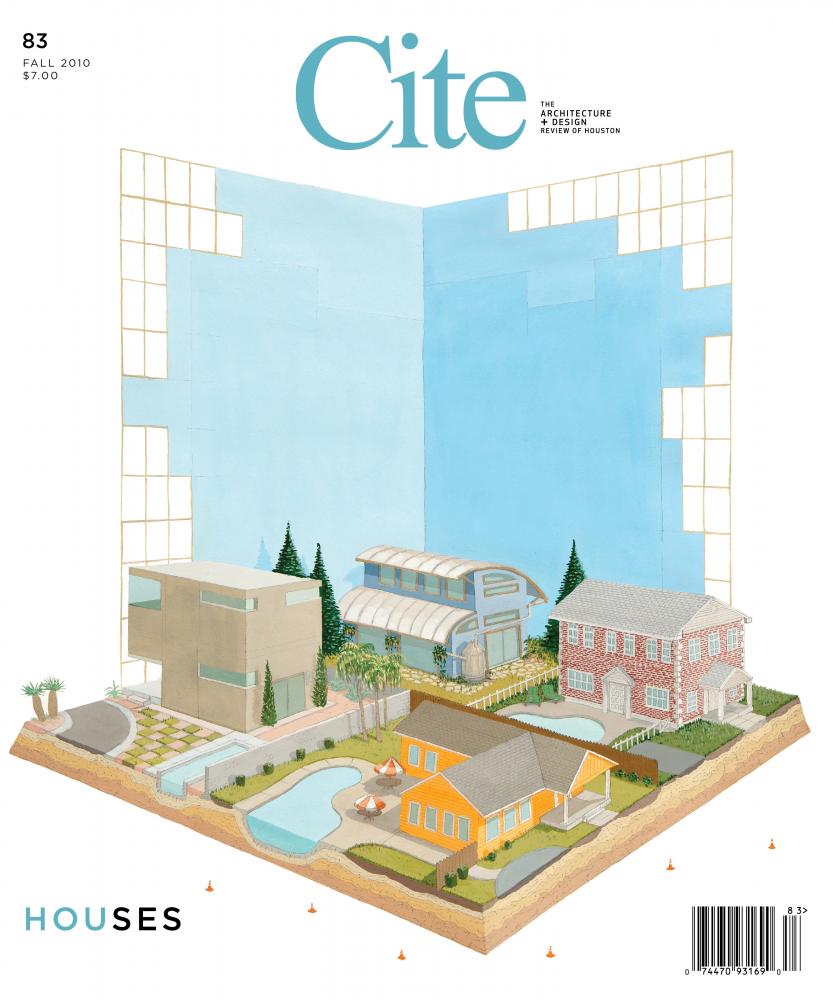Cite 83: Houses
Fall 2010
Editor’s Note
As the title of an article announced in the February 1937 issue of Houston, the old Chamber of Commerce magazine, "Houston is essentially a home city." The spreading field of individual houses observed 73 years ago continues unabated today as one of the few constants in Houston's development history. It would be rare, I assume, for the typical reader not to have gone on at least a few house tours and coveted a particular arrangement of kitchen cabinetry, closet shelving, or clever poolside landscaping. What is it about houses that captivates us and simultaneously blinds us to the problems inherent in using them as the building block of a large metropolitan area --- sprawl, congestion, energy use, and their environmental impact? For one thing they are incredibly efficient expressions of zeitgest. Where else do you see desires, dreams, and ambitions so plainly evident in just a few thousand square feet?
People who build houses are tapping into our primal desire for shelter and hearth, however buried it may be in a digitized age. A house tells people your status in your community through its size, location, materials, and planning. It can demonstrate a commitment to rigor and austerity, or embrace the riches of era. It can be proud and expansive, or hermetic and retreating. A house exposes the emotional and, often, the irrational aspects of our personalities. Does the master bathroom really need to be that big? Do we need quoins, keystones, and styrofoam molding covered with imitation stucco all over the place to be happy? Why are our garages so frequently filled with everything but our cars? Do we need a flat roof in a place where it rains so much and where an attic would provide better insulation from the heat? Couldn't we make do with any old place instead of hiring that expensive architect, "custom" builder, or contractor? Houses are essays in human psychology. It is these kinds of things about them that intrigue me.
As is a tradition in Cite, in this issue we are revisiting and updating subjects that have been previously reported, notably in #9 (Spring 1985), #16 (Winter 1986), and #49 (Fall 2000), all of which were about housing. However, many of the topics in this issue are addressed in novel ways. The article about Curtis & Windham's remarkable classic houses is perhaps a first for Cite, which has historically privileged modern architecture. The architectural tour of Beaumont gives rare coverage to an interesting nearby neighbor. My article about the Maceo House in Galveston views the Victorian city in a non-traditional way by closely examining one of its best modern buildings. Stephen Fox's essay reflects on how something as simple as the color white is subtly coded with metaphoric meaning in architecture. Finally, the townhouse articles examine an interesting new trend in speculative building where "design" is being touted as a selling feature, instead of just square-footage or location.


